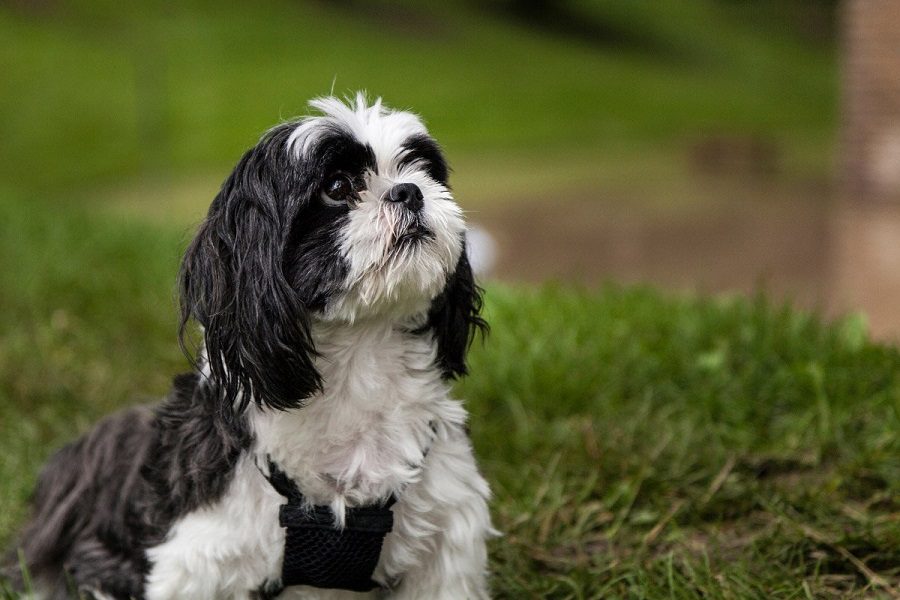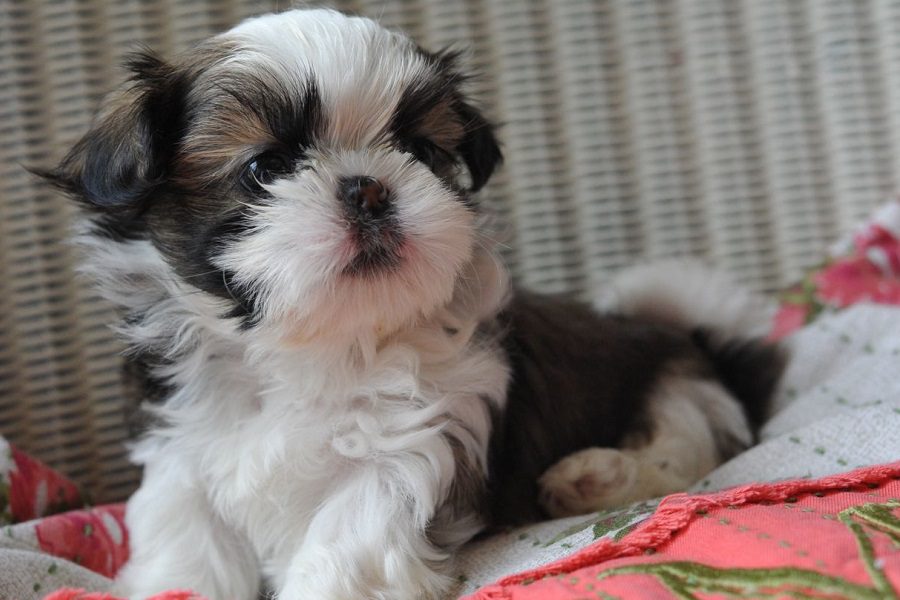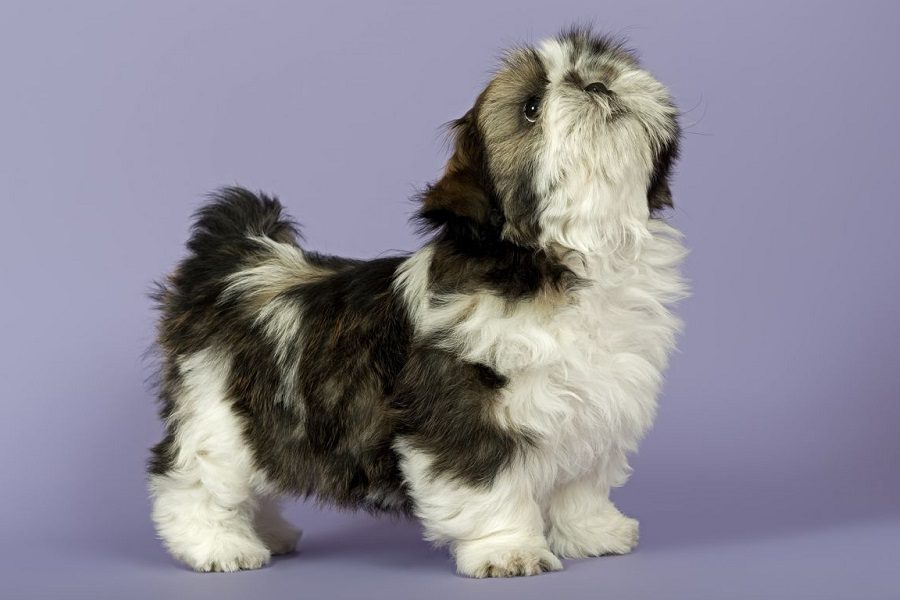Last Updated: 2 years ago
Although the Chinese name “Shih Tzu” translates to “little lion”, there is nothing fierce about this adorable dog breed.
In fact, these pooches are lovers, not hunters. The affectionate and happy dogs are outgoing and love nothing more than to follow their people around the house. Shih Tzu’s have made themselves comfortable on the laps of people from various walks of life for centuries.
However, in recent years, they have become less lap dogs and more active dogs as pet parents start training them in dog sports, obedience, rally, and agility competitions.
Not only do they make great family pets who get along with animals, but they do also get along with children provided kids are trained to gently handle and play with small puppies.
This delightful small breed is available in a few varieties, and in the following article, we’ll take a look at the Shih Tzu varieties you should be aware of.
Types Of Shih Tzus
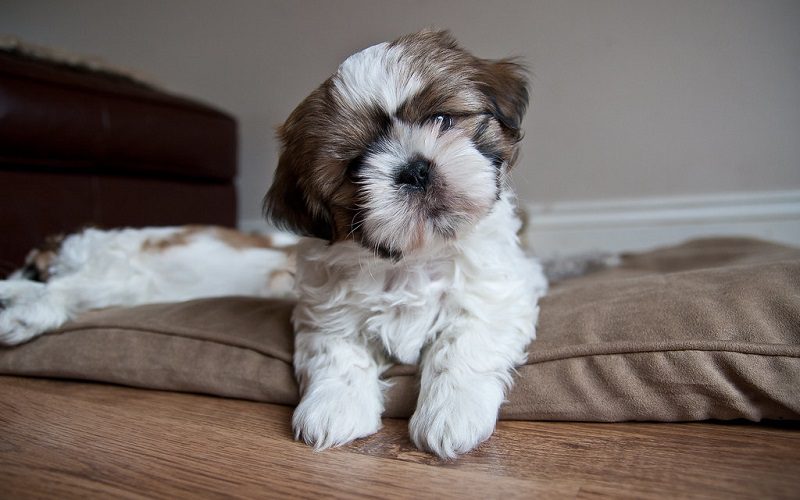
Shih Tzus have been around longer than many other breeds. With an ancestry dating back to ancient China, they have a history of being the preferred lapdogs of monks and Emperors alike.
Available in different shapes and sizes, Shih Tzus come in unique varieties as well, such as the blue-eyed Shih Tzu, Perro Shih Tzu, Brown Shih Tzu, and Brindle Shih Tzu.
Each variety is as cuddly and affectionate as the next one. So let’s take a closer look at the various varieties of Shih Tzus and what each one has to offer.
American Shih Tzu
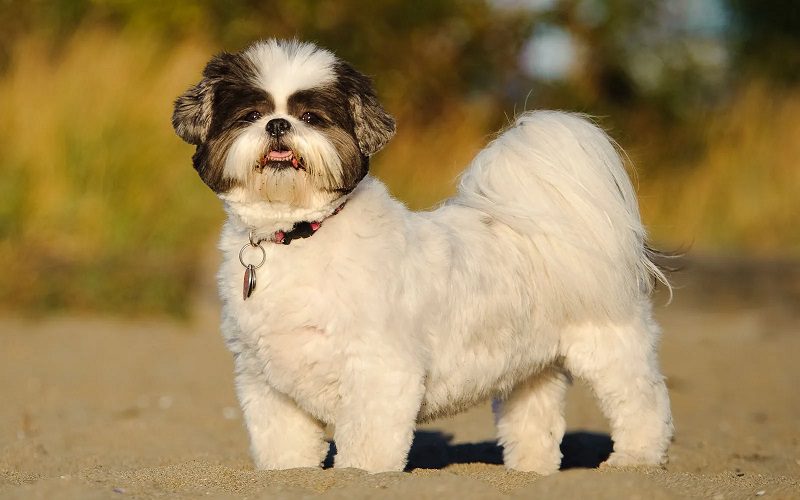
Recognized by the American Kennel Club in 1969, the American Shih Tzu is a purebred.
According to the Official Shih Tzu Guide, the dog’s physical attributes include a small chest, high and forward-facing legs and frontal shoulders, a short neck, square-shaped head, and small wide set eyes.
European Shih Tzu
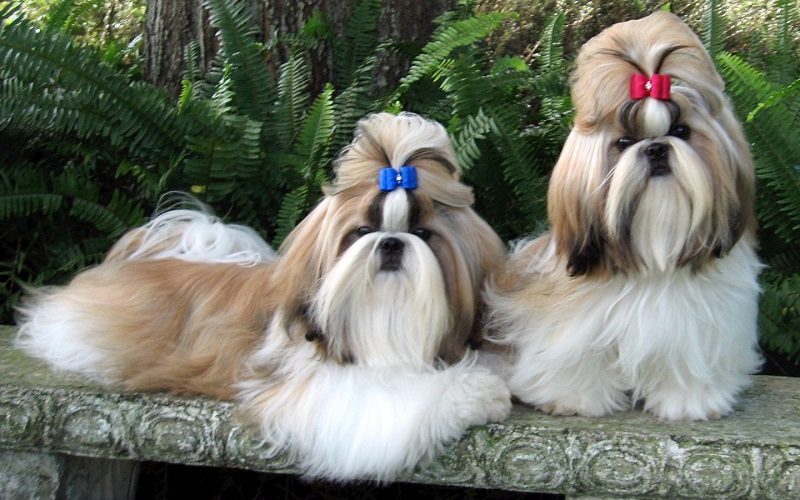
Like the American Shih Tzu, the European Shih Tzu is also purebred and was acknowledged by the United Kingdom Kennel Club in 1946.
They differ from the American Shih Tzus slightly in physical appearance since they have a wider stance with front legs bent back a bit, a round head and long neck, large eyes, and a broad chest.
Imperial Shih Tzu
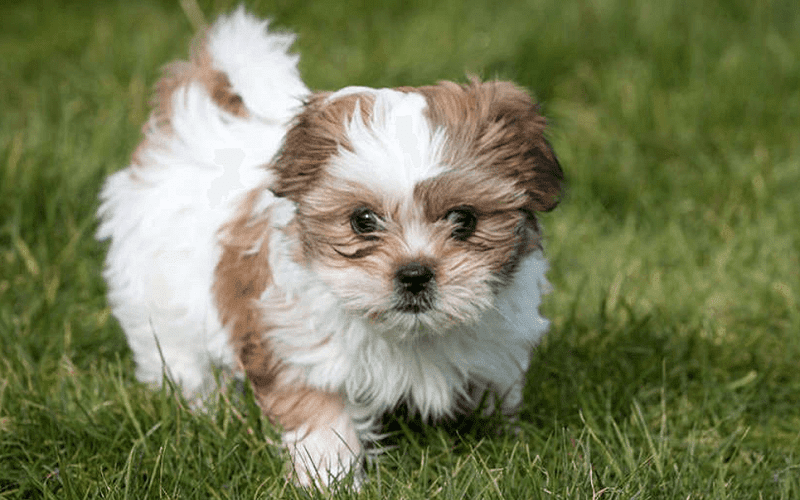
Although the Imperial Shih Tzu is often passed off as a purebred, it is not, and neither is it sanctioned by the National Kennel Club.
The description “Imperial” came about as a complimentary term for an otherwise impure and smaller version of a purebred Shih Tzu. By measuring the height and weight of these dogs, you’ll be able to tell them apart from purebred Shih Tzus.
According to the national kennel clubs, between 10 to 11 inches high and 7 pounds heavy is the acceptable height and weight of purebred Shih Tzus. The offspring often turn out to have genetic defects because breeders normally pick the runt of the litter to create the Imperial breed.
Teacup Shih Tzu
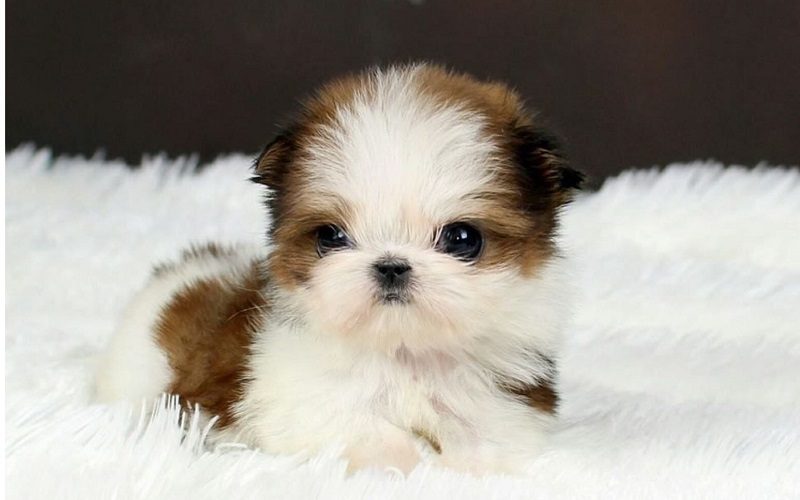
The miniature size of this breed is what has earned it the coined term “teacup” Shih Tzu, and beyond the name, there are very few differences between the Imperial and Teacup breeds.
According to the Official Shih Tzu guide, the Teacup is manipulated to stay small, although this information is often not disclosed by sellers to potential customers.
Like the Imperial breed, the Teacup Shih Tzu is also prone to certain health concerns since they are usually bred from two small runt-of-the-latter dogs. In most cases, these genetically manipulated breeds end up with health problems.
Blue-eyed Shih Tzu
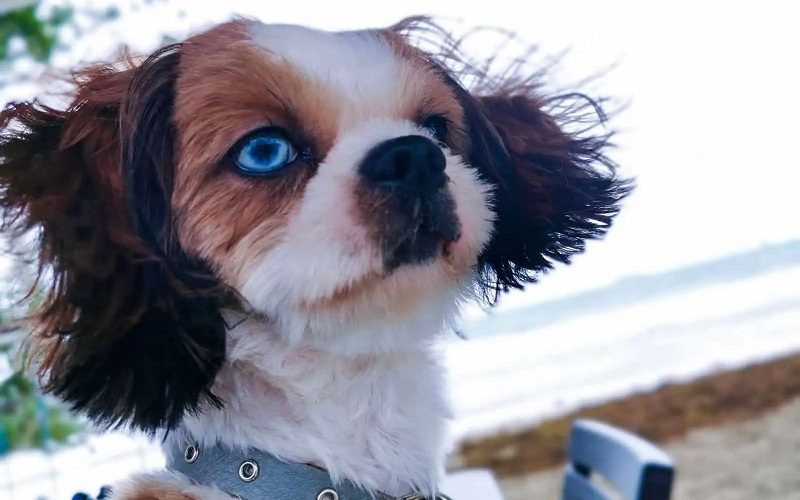
Although it is quite rare, Shih Tzus may occasionally have blue eyes. However, this usually happens when there is a lack of the color gene for black.
Consequently, it results in a dilute pigmentation that will give the dog’s eyes a blue color. But, the light eye color has nothing to do with the coat.
In order for these dogs to have blue eyes, you need to look at the pigment of the nose and muzzle, not the coat. If you’ve heard the terms “liver” or “blue” being used to describe the Shih Tzu, they are not referring to the color of the coat but rather the pigmentation of the skin.
The standard color of the Shih Tzus breeds eyes, and the nose is usually a solid black. Therefore the lighter pigment is actually a weak gene and considered a genetic fault.
Blue-eyed Shih Tzus often have dark brown or gray on their noses, lip, eye rims, and footpads.
When in certain lighting conditions, the gray color gives the appearance of a blue hue which, is probably how they got their “blue” description.
The blue-eyed Shih Tzu coats can be any color; however, gray is the most common coat color of this particular variety. But a gray coat doesn’t necessarily mean that a Shih Tzu will have blue eyes, so you need to check the nose to be sure.
If the nose is solid black, this is not a “blue” dog. The nose could be dark gray and look black under low lighting. However, when put in direct sunlight or side-by-side, the difference is clear. Shih Tzu puppies, on the other hand, have a different story when it comes to blue eyes.
An interesting fact is that all puppies are born with blue eyes. It’s also one of the lesser-known facts.
This is mainly because, by the time you see their eyes, puppies are already several weeks old, and the eye color has already changed to the permanent dark eye color.
Puppies’ eyes are usually closed for the first couple weeks of their life. Around the third week, when they begin to open them, it will reveal the baby blue eyes. However, after a few more weeks, the eye color slowly begins to change to a more solid fuel.
Around 10 to 12 weeks, the eye color changes to the permanent eye color, which is usually black or dark brown. In some puppies, the process may take up to 16 weeks. However, in rare cases, puppies keep their blue eyes permanently.
Brown Shih Tzu
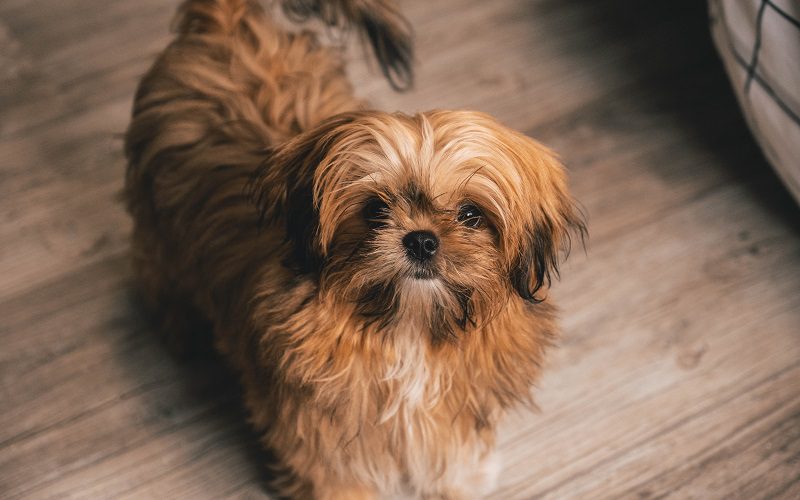
Brown Shih Tzus are often referred to as chocolate colored. Solid brown Shih Tzus, in most cases are Liver colored. However, Liver is nominated by skin pigmentation and not the coat color.
With Liver, the eye rims, lips, nose, and paw pads are Liver colored, which extends from a light brown, with a sometimes pink tint to a dark brown. Although your eyes are seeing a brown coat, this is not how the dog is officially certified.
Even if a puppy is born with a solid brown coat, it will change as he matures, and in most cases, it lightens. Irrespective of whether the Shih Tzu has a light brown coat or solid black, many a time, as they mature, it changes to a more distinct dark brown color.
Black Shih Tzu
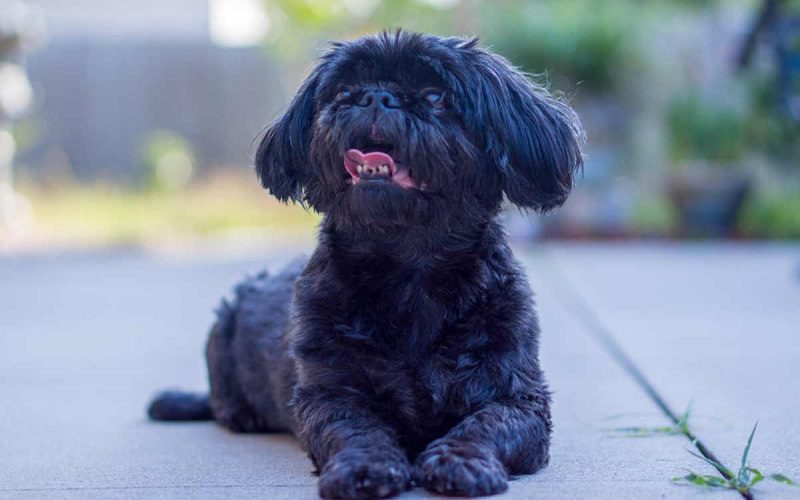
Black Shih Tzus are extremely rare. Especially those that are a full solid black. In many cases, their coat is offset by a secondary color such as white, which usually gives them the incredible black and white color.
Black Shih Tzus always have black noses, eye rims, lips, and paw pads. As they mature, these coats may fade, and it’s not uncommon for black puppies to transition to a more silver color coat.
Additionally, sun exposure can alter the black coloring, particularly in the summertime, when the sun is at its strongest. It can also cause a sun burning effect in which the hair develops, rust, or red color, which resembles highlights.
Brindle Shih Tzu
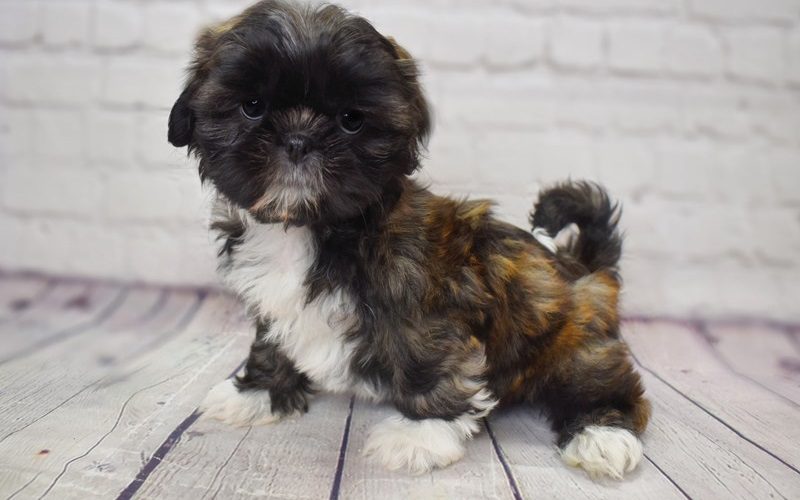
The brindle coated Shih Tzu is probably one of the most beautiful varieties around. The coat is usually one base color with streaks of another color running throughout the coat, which ultimately creates beautiful multicolored tones.
Interestingly enough, brindle is not a color since it is reminiscent of multiple colors and refers more to the pattern of the coat.
However, the brindle Shih Tzu was officially recognized by the American Kennel Club. So when you hear the term brindle Shih Tzu, it is making reference to the color of the coat.
Coats that feature black, gray, brown and other shades can all be classified as brindle. This often makes it difficult for Shih Tzu owners to determine whether they should call their dog a brindle Shih Tzu or not.
The brindle effect can vary, as can the patterning effect. In some dogs, it will be heavy and in others, lighter. This determines how much of the underlying coat color shows through.
In some cases, the brindle effect is tighter, meaning that the stripes in the coat are closer together in some dogs, and may be looser in others. In some dogs, it may simply appear in certain places such as over the head or the back.
What is the rarest Shih Tzu Color?
Although Shih Tzus are available in white, blue, red, silver, gold, liver, and brindle, the Black Shih Tzu seems to be amongst the rarest.
A solid black Shih Tzu is extremely rare, and there is usually a white marking somewhere, such as on top of the head or on the chest. This full black color is still quite unusual but does exist.
What are the predecessors of Shih Tzu?
Although not much is known about the origins of the Shih Tzu, according to genetic testing, he is one of the more ancient breeds to exist in this day and age.
These are some interesting Shih Tzu fun facts
It is believed that these dogs originated in Tibet and were bred by Tibetan Lamas to be a tiny replica of a lion, which is associated with Buddhist mythology.
Often serving as companions and watchdogs to monks in the lamaseries, these happy and entertaining little dogs were surrounded by lots of myths.
According to one of these myths, it is believed that the Shih Tzu is an incarnation of mischievous household gods, and another says that they carried the souls of lamas that have not yet achieved “nirvana” which is the transcendence of human desire.
The Chinese often referred to Shih Tzus as chrysanthemum dogs because of how the hair grows on their faces, which is basically in all directions like the petals of a flower.
Although the Shih Tzu doesn’t even remotely resemble wolves, it is genetically one of the domestic breeds most closely related to wolves.
Originating in Tibet, once the Chinese received these dogs, they started breeding them with Pekingese and Pugs to create the modern-day Shih Tzu that we all know and love.
Conclusion
The Shih Tzu breed dates back at least 1,000 years and is now one of the most popular breeds in the United States due to their affectionate nature and positive attitude.
Whether you are looking for a charming lap dog or an active and confident pet, Shih Tzus are highly adaptable and can be easily trained. Their small size makes them ideal for apartments, as long as they get their daily dose of exercise.
Resources:

